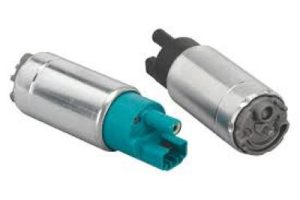Not surprisingly, fuel pump efficiency is best-served with a clean fuel system. Replacing the fuel filter is necessary every 30,000 to 50,000 miles that we get an increased a flow of fuels which can be increase by about 10-20% than before what it means is that there will object less pressure on pump. By using a thoroughly clean air conditioning filter, you not necessarily helping your house cleaner and more secure to breathe, youre protecting the AC pump. A clogged filtration causes the pump motor to work tougher, shortcutting is results in and its own lifespan. For instance, if a fuel pump is made to deliver 300 liters per hour (LPH), a clogged filter might allow only 240 LPH to pass through the filter; thus, slowing down or eventually stopping the engine.
Replacing the fuel lines is another important step when you are converting your car in order to make them more efficient. Performance fuel lines may support 500+ LPH where standard fuel lines are limited to 200-300 LPH. In high horsepower applications like these, the need for fuel is great. Moving to bigger-diameter fuel lines can increase flow by as much as 30 percent, particularly when upgrading -to-a high-flow fuel pump.
Pump efficiency is heavily impacting the quality of fuel. High-grade or ethanol-free fuel helps to offset the risk of contaminants and clogs in the fuel system. The fuel filter and pump may be affected up to 15%, as they get clogged with debris and sediment from poor-quality fuel. For those in doubt of local gas quality, fuel additives such as Lucas Fuel Treatment can clean the system and break down deposits to help the pump be more efficient.
Fuel pump performance is significantly affected by voltage stability. This provides the pump with a constant 12–14 volts, maxi-mizing output. In some cases, including on high-performance pumps that require steady electrical inputs, fuel flow can be cut off 20% by voltage drops. Under high load conditions, by installing our voltage booster for fuel pumps can offer a solution to this problem by stabilizing the voltage so that they return ready for use again and correct fuel delivery. This means that many a performance enthusiast has installed aftermarket voltage boosters to support pumps in the range of 450 LPH and higher and ensure fuel pressure remains steady even under high RPM conditions.

Reducing heat exposure will help you to achieve more pump efficiency. The heat damages the internal components of the pump which results in 30% less life span to operate. Fitting a heat shield to the tank or moving the pump to cooler area can reduce temperature by as much as 10-15 degrees F. The constant load pressure means heat management is even more critical in high-performance vehicles to ensure long-term efficiency.
Achieving fuel system tune The fuel pump works in its design range. The adjustability of a fuel pressure regulator can help fine tune the fuel system to ensure the pump is pumping enough and working too hard. Good vacuum pressure levels Not only does this help the system work efficiently, it also prolongs the pump's lifespan by lowering the internal load exerted on parts like the impeller and diaphragm. A lot of times tuning a fuel system so that it runs at 55 psi, instead of its maximum rating (60psi), you can also greatly extend the life of the pump by reducing the stress on the pump as well.
This also helps with efficiency by minimizing the need to use fuel at idle. For example, a properly functioning idle air control valve or setting the right engine idle speed can cut fuel consumption at low demand on the pump when slowing down off throttle. The method is particularly advantageous for stop-and-go driving in cities with long idle times, which could feasibly add several thousand miles to the life of a pump.
If you want to know more about how to make your Fuel Pump work better go here for some other tips and performance upgrades.
